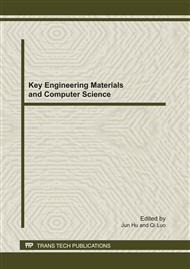p.97
p.103
p.108
p.112
p.118
p.124
p.130
p.135
p.140
Application and Evaluation of Halbach-Like Magnet Arrays to Magnetic Drug Targeting
Abstract:
Among the proposed techniques for delivering drugs to specific locations within the human body, magnetic drug targeting (MDT) surpasses because of its noninvasive character and its high targeting efficiency. In this study, two novel arrangements of permanent magnets, Halbach array and spin-Halbach, were introduced to improve the magnetic force acting on a magnetic micro/nanoparticle. Then an approach of design and evaluate the MDT magnets was developed, which was based on three performances proposed in the paper, force parameter, evaluation variable, and transverse inhomogeneity. Corresponding parameters for Halbach-Like arrays at distance of 3 cm of application from magnetic field source were calculated and compared with the other two simple magnet arrays. According to the results, the values of performances for the Halbach-Like magnet arrays were improved obviously.
Info:
Periodical:
Pages:
118-123
Citation:
Online since:
August 2011
Authors:
Price:
Сopyright:
© 2011 Trans Tech Publications Ltd. All Rights Reserved
Share:
Citation:


